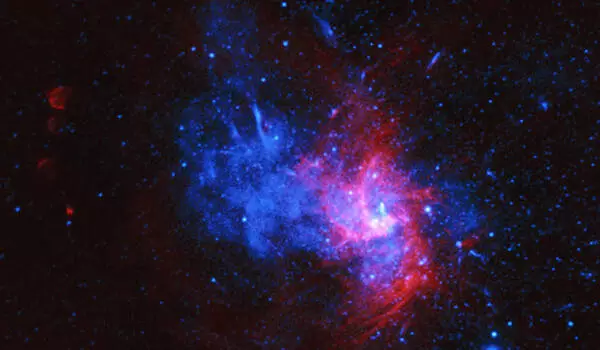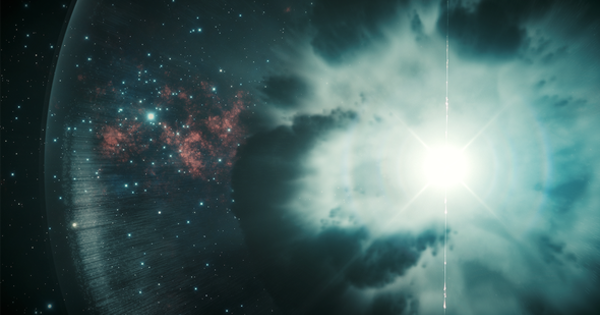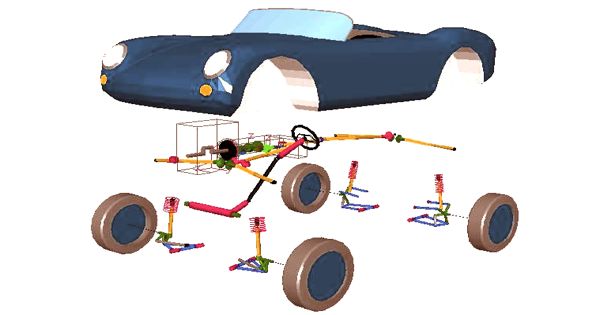What is the size of the universe? It’s one of astronomy’s fundamental questions. We can estimate a diameter by looking for the farthest observable point from Earth (and, by extension, the oldest given the speed of light). Astronomers can now peer back in time to the moments immediately following the Big Bang, thanks to advances in technology. This may appear to imply that we can see the entire universe. However, the size of the universe is determined by a variety of factors, including its shape and expansion. As a result, while scientists can make educated guesses about the size of the universe, they cannot quantify it.
Astronomers have analyzed archive data for powerful cosmic explosions from the deaths of stars and found a new way to measure distances in the distant Universe.
An international team of 23 researchers led by Maria Dainotti, Assistant Professor at the National Astronomical Observatory of Japan (NAOJ), has analyzed archive data for powerful cosmic explosions from the deaths of stars and found a new way to measure distances in the distant Universe.
It is difficult to get a sense of depth in space because there are no landmarks. Astronomers use one technique to search for “standard candles,” objects or events whose underlying physics dictate that the absolute brightness (what you would see if you were right next to it) is always the same. It is possible to determine the distance to the standard candle and, by extension, other objects in the same area by comparing the calculated absolute brightness to the apparent brightness (what is actually observed from Earth).
Astronomers have analyzed archive data for powerful cosmic explosions from the deaths of stars and found a new way to measure distances in the distant Universe. These findings will shed new light on the mechanics of this class of GRBs, as well as serve as a new standard candle for observing the distant Universe.
The lack of standard candles that are bright enough to be seen from more than 11 billion light-years away has hampered research into the distant Universe. Gamma-Ray bursts (GRBs), radiation bursts caused by the deaths of massive stars, are visible, but their brightness is dependent on the characteristics of the explosion.
Scientists calculate the size of the universe in a variety of ways. They can detect early universe waves known as baryonic acoustic oscillations, which fill the cosmic microwave background. They can also measure distances with standard candles, such as type 1A supernovae. These various methods of measuring distances, however, can provide answers.

How inflation is changing is also a mystery. While the estimate of 92 billion light-years comes from the idea of a constant rate of inflation, many scientists think that the rate is slowing down. If the universe expanded at the speed of light during inflation, it should be 10^23, or 100 sextillion. One explanation for this, outlined by NASA(opens in new tab) in 2019, is that dark energy events may have impacted the expansion of the universe in the moments after the Big Bang.
Taking on the challenge of using these bright events as standard candles, the team examined archive data for visible light observations of 500 GRBs taken by world-class telescopes such as the Subaru Telescope (owned and operated by NAOJ), RATIR, and satellites such as the Neil Gehrels Swift Observatory. The team identified a class of 179 GRBs with common features and likely caused by similar phenomena by studying the light curve’s pattern of how the GRB brightens and dims over time. The team was able to calculate a unique brightness and distance for each GRB based on the characteristics of the light curves, which can be used as a cosmological tool.
These findings will shed new light on the mechanics of this class of GRBs, as well as serve as a new standard candle for observing the distant Universe. Dainotti, the lead author, had previously discovered a similar pattern in X-ray observations of GRBs, but visible light observations were found to be more accurate in determining cosmological parameters.
















